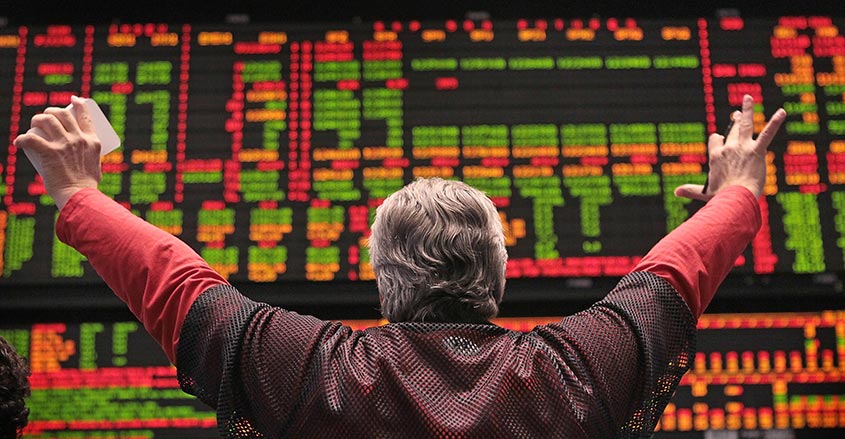Stock bull Steve Chiavarone sees the S&P 500 adding a staggering 11%, even after months of hitting record highs.
After a few challenging weeks, the large-cap index is now just above 2,700, a point some analysts say should be “attractive” for buyers.
Chiavarone is on board. The money manager doesn’t see the summer slump for stocks lasting for too long.
In fact, he believes the rally will pick up speed over the summer and continue till the year’s end.
“We think right now that there’s a wall of worry,” Chiavarone said.
“That’s evident because everyone feels the need to apologize for being bullish and we just don’t.”
He sees the S&P 500 hitting 3,100 price for the year. That’s one one of the most bullish calls on Wall Street.
A 3,100 price target would be close to 15% climb from where we are right now and almost 16% increase for the year.
Chiavarone said it all goes back to fundamentals. “Earnings are growing strongly, 20% year over year, that looks like it’s going to accelerate in Q2, not fade,” he said.
“We think double-digit earnings growth certainly lasts throughout the remainder of ’18 and into ’19.”
In the first quarter of this year, the S&P 500’s earnings grew 25%.
Chiavarone sees the possibility of plus-20% growth in the second quarter. He has set a target of $155 a share for the S&P’s earnings by years end.
He thinks it might actually come in closer to $160 a share.
Road bumps
That is not to say that it is all going to be smooth sailing from this point out. Chiavarone himself has acknowledged some possible obstacles ahead.
One stands out in particular. First, there could be a spike in inflation. That might mean aggressive response from the Federal Reserve in the form of more rapid increases in interest rates.
Faster moving rates would cool the economy and stocks along with it, and possibly tip the economy into recession.
Chiavarone sees this outcome as possible, if not likely. “If earnings are growing 20%, I need P/Es to fall 20% for the market to be flat.”
“They don’t fall 20% unless you’re living in a recession.”
However, he said, “you need the Fed to get more aggressive to cause that recession and inflation is what would make the Fed more aggressive.”
“Right now we just don’t see a recipe for a real spike in inflation and the numbers are kind of proving that to be correct.”
The personal consumption expenditures price index is the Fed’s main measure of inflation.
As of the end of May, the annualized inflation rate was 2.8% The central bank traditionally targets a 2% inflation target but the current leadership at the Fed suggested that a slightly higher figure might be acceptable.


